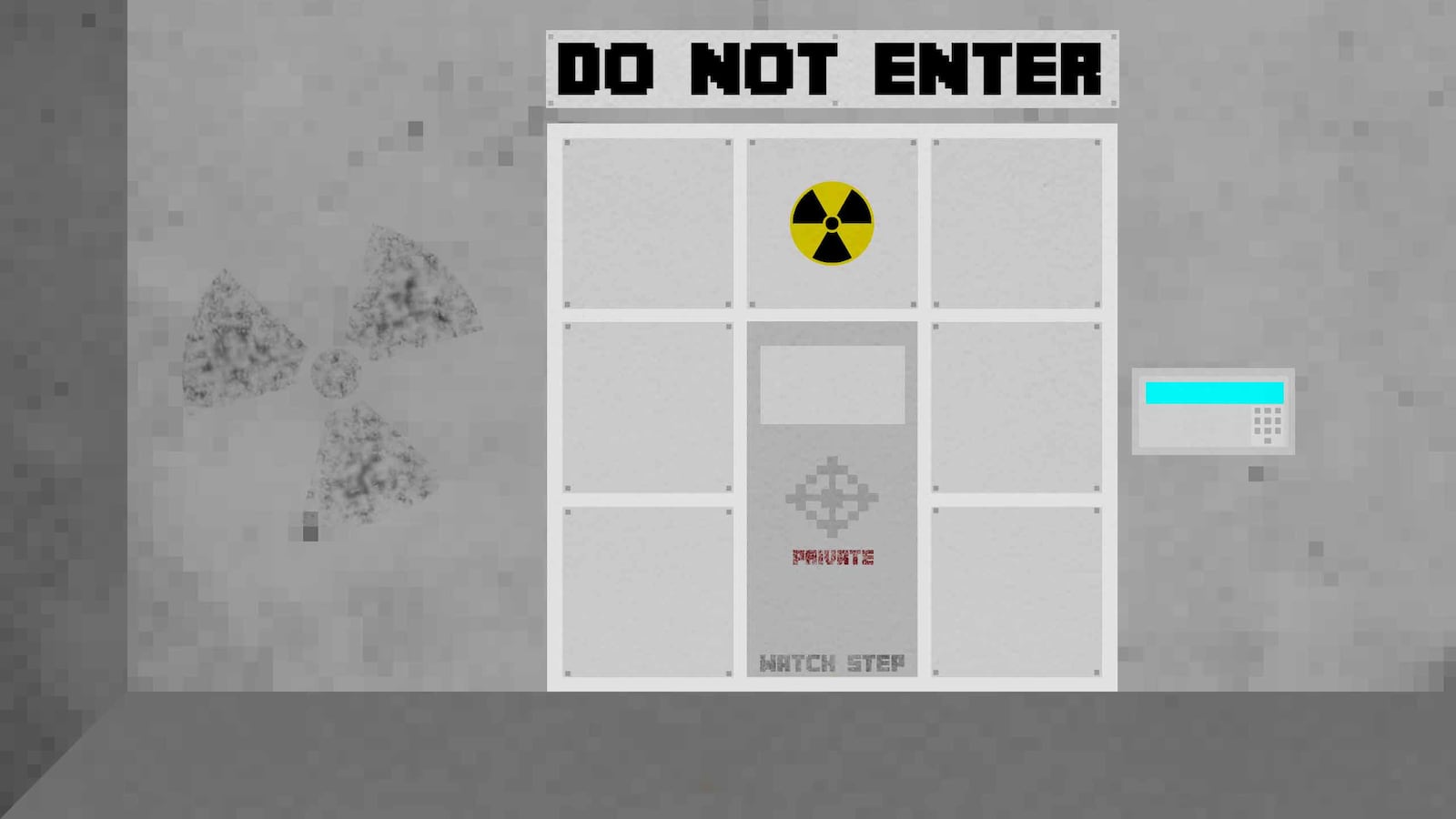If you’ve ever wondered what a nuclear apocalypse looks like from inside the Defense Department’s concrete holy of holies, we can help you out with that now. Sort of.
On Thursday, the Middlebury Institute of International Studies (MIIS) released two 3-D glimpses of armageddon architecture: the Pentagon’s emergency bunker at the Raven Rock Military Complex and Russia’s command center inside Kosvinsky Mountain, rendered as playable worlds for the Minecraft video game platform.
The worlds are designed about as close to the real thing as open sources and Minecraft’s Lego-like block world will allow. An MIIS team led by Dr. Jeffrey Lewis (full disclosure: I helped out on the project) used data from NASA’s Shuttle Radar Topography mission to mirror the real world geography of the sites, filling in the structures with help from satellite photos and a declassified document released through the Freedom of Information Act to map the inner network of tunnels at Raven Rock. The rest, particularly at Kosvinsky—about which Russia has released little—was left up to the creative imagination of MIIS’ 3-D modelers.
For those unfamiliar, Raven Rock is the Defense Department’s home away from home in the event that their home becomes a radioactive ash heap. First opened under President Eisenhower, the bunker complex lies in the heart of Raven Rock Mountain in southern Pennsylvania, just a short helicopter ride from the Pentagon. Today, it’s part of a network and served as a secure base for Deputy Secretary of Defense Paul Wolfowitz during the 9/11 attacks.
So what’s the point of creating a Minecraft bunker world?
When military and political leaders talk about the possibility of nuclear war with the general public, they sometimes speak in reassuring tones that are less than explicit about the nature of the threat than the facts would suggest.
In November, North Korea tested an intercontinental ballistic missile with a range of 8,100 miles, putting the entire continental U.S. within range of Pyongyang’s nuclear arsenal, but defense officials play down the threat, publicly doubting the North’s ability to reach the U.S. mainland. In the event that a rogue state like North Korea does light off a nuclear volley across the Pacific, the tweeter-in-chief himself reassures us that, “We have missiles that can knock out a missile in the air 97 percent of the time, and if you send two of them, it’s going to get knocked down.”
Economists use a concept called “revealed preference” to suss out a consumer’s true priorities. The basic gist of it is that what you spend your money on says more about what’s important to you than what your own words may indicate—the “hips don’t lie” of interpreting consumer behavior.
During the Cold War, there wasn’t much of a difference between rhetoric and spending on doomsday preparation. The U.S. invested heavily in a massive network of bunkers and emergency facilities for various parts of the federal government in preparation for a doomsday scenario whose likelihood the American public, accustomed to duck-and-cover civil defense drills and the occasional superpower standoff, broadly believed could happen.
A funny thing happened after the Cold War ended, though: The talk of world-ending nuclear clashes declined but the federal government’s doomsday preppers kept going. Sure, the pace and scale of activity wasn’t near its Cold War peak after the fall of the Soviet Union, but a rump collection of facilities lived on and gained new life over the years.
The coordinated attacks against the headquarters of American political and military leadership on 9/11 moved the prospect of armageddon, or at least something approximating it, higher up in the minds of policymakers. The government dusted off its network of panic rooms and started investing in upgrades to places like Raven Rock, which has since grown from 450,000 to 639,000 square feet according to Garrett Graff’s book about the facility.
If plans are bets about the future, Uncle Sam has kept a few hundred million dollars worth of chips riding on “blinding flash” at the roulette wheel.
It’s not quite the world of Dr. Strangelove, where the lecherous old men of national security, having destroyed the world with nuclear weapons, prepare to abandon their constituents and secretly head down into mine shafts with a “bold curiosity for the adventure ahead” as they repopulate the world with a ratio of 10 women to every man. But it does highlight the gap between public rhetoric and private hedging.
And that’s where a doomsday bunker rendered in Minecraft comes in. Sure, we know where Raven Rock is along with a few of its other federal cousins, but the facilities themselves are closed off to the public, tended to by guards with guns who aren’t keen on photography.
For most people, a Minecraft tour of Raven Rock is the closest they’ll ever get to seeing the frightening world the federal government has quietly contemplated through their own eyes.






